Selective CD28 Inhibition Modulates Alloimmunity and Cardiac Allograft Vasculopathy in Anti-CD154-Treated Monkeys
- PMID: 29319621
- PMCID: PMC5820224
- DOI: 10.1097/TP.0000000000002044
Selective CD28 Inhibition Modulates Alloimmunity and Cardiac Allograft Vasculopathy in Anti-CD154-Treated Monkeys
Abstract
Background: Selective CD28 inhibition is actively pursued as an alternative to B7 blockade using cytotoxic T lymphocyte antigen 4 Ig based on the hypothesis that the checkpoint immune regulators cytotoxic T lymphocyte antigen 4 and programmed death ligand 1 will induce tolerogenic immune signals. We previously showed that blocking CD28 using a monovalent nonactivating reagent (single-chain anti-CD28 Fv fragment linked to alpha-1 antitrypsin [sc28AT]) synergizes with calcineurin inhibitors in nonhuman primate (NHP) kidney and heart transplantation. Here, we explored the efficacy of combining a 3-week "induction" sc28AT treatment with prolonged CD154 blockade.
Methods: Cynomolgus monkey heterotopic cardiac allograft recipients received sc28AT (10 mg/kg, d0-20, n = 3), hu5C8 (10-30 mg/kg, d0-84, n = 4), or combination (n = 6). Graft survival was monitored by telemetry. Protocol biopsies and graft explants were analyzed for International Society of Heart and Lung Transplantation acute rejection grade and cardiac allograft vasculopathy score. Alloantibody, T-cell phenotype and regulatory T cells were analyzed by flow cytometry. Immunochemistry and gene expression (NanoString) characterized intra-graft cellular infiltration.
Results: Relative to modest prolongation of median graft survival time with sc28AT alone (34 days), hu5C8 (133 days), and sc28AT + hu5C8 (141 days) prolonged survival to a similar extent. CD28 blockade at induction, added to hu5C8, significantly attenuated the severity of acute rejection and cardiac allograft vasculopathy during the first 3 months after transplantation relative to hu5C8 alone. These findings were associated with decreased proportions of circulating CD8 and CD3CD28 T cells, and modulation of inflammatory gene expression within allografts.
Conclusions: Induction with sc28AT promotes early cardiac allograft protection in hu5C8-treated NHPs. These results support further investigation of prolonged selective CD28 inhibition with CD40/CD154 blockade in NHP transplants.
Conflict of interest statement
Figures
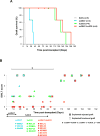
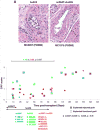


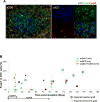
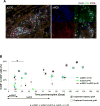
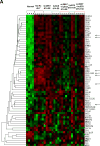


References
-
- Oshima S, Karrer EE, Kawato Y, et al. The Effect of ASP2409, a Novel CD86-Selective Variant of CTLA4-Ig, on Renal Allograft Rejection in Nonhuman Primates. Transplantation. 2016;100(12):2611. - PubMed
-
- Vincenti F, Rostaing L, Grinyo J, et al. Belatacept and Long-Term Outcomes in Kidney Transplantation. N Engl J Med. 2016;374(4):333. - PubMed
Publication types
MeSH terms
Substances
Grants and funding
LinkOut - more resources
Full Text Sources
Other Literature Sources
Medical
Research Materials

